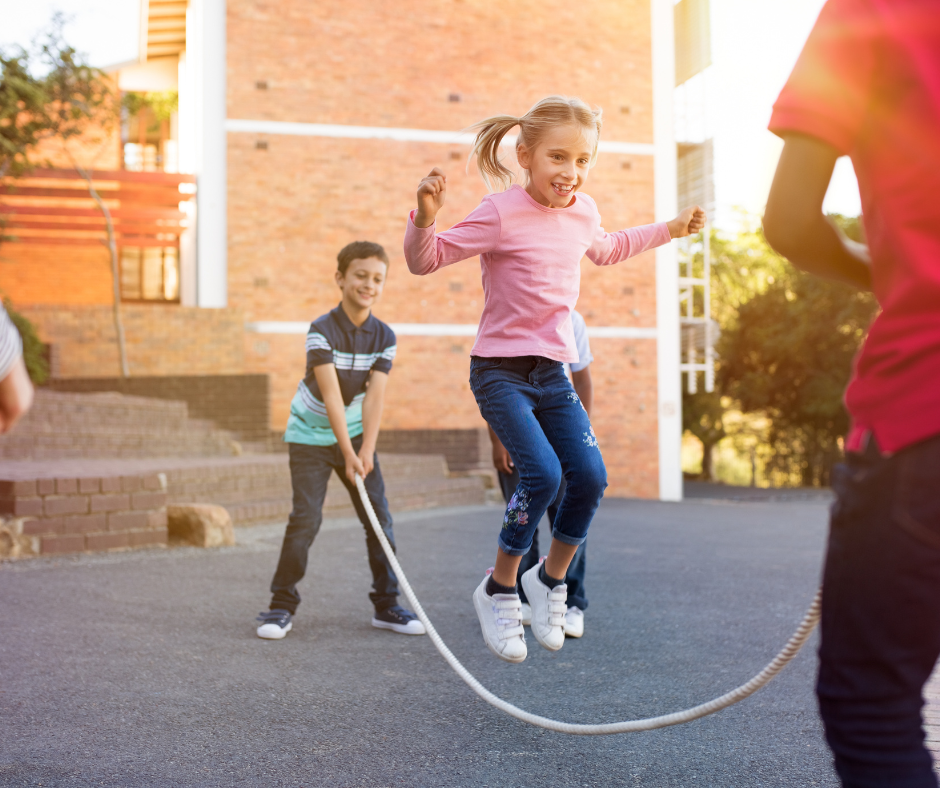How to Add Physical Activity to Your Child’s Day

September is Childhood Obesity Awareness Month, a reminder of how important healthy habits are in helping children grow strong, confident, and active. One of the best ways to support your child’s health is by making sure they get enough daily physical activity—not just for their bodies, but for their minds too.
Why Daily Movement Matters
Physical activity does so much more than help maintain a healthy weight. According to the American Academy of Pediatrics, regular activity in children and teens:
- Improves strength and endurance
- Builds healthy bones and lean muscles
- Develops motor skills and coordination
- Reduces body fat
- Promotes emotional well-being and lowers stress, anxiety, and depression
That’s a big list of benefits from something as simple as moving and playing!
How Much Activity Do Kids Need?
For children 6 years and older, the recommendation is at least 60 minutes of physical activity every day. Younger kids benefit most from active play, like running, climbing, or jumping.
The good news? Kids don’t need to do all 60 minutes at once. Movement can be broken into smaller chunks throughout the day—like walking to school, jumping rope after school, and playing at the park in the evening.
Fun Ways to Add Activity to Your Child’s Day
The key is to make it fun and age-appropriate so kids stay engaged. Here are a few ideas to work more movement into daily routines:
Aerobic Activities (These get the heart pumping and help increase cardiovascular fitness! That’s their heart health.)
- Brisk walking or bike rides
- Dancing around the living room
- Hiking or rollerblading
- Games like tag or soccer
- Swimming or tennis
Muscle-Strengthening Activities (These build strength.)
- Playground fun like climbing and swinging
- Tug-of-war or rope climbing
- Push-ups, sit-ups, or resistance bands
- Martial arts such as karate or tae-kwon-do
Bone-Strengthening Activities (These support growing bodies and keep bones stronger and less susceptible to breaks.)
- Jumping rope, hopping, or skipping
- Basketball, volleyball, or gymnastics
- Running games like relay races
Tips for Parents
Helping your child stay active doesn’t have to be complicated—it can be as simple as making movement a natural part of your family’s day. From leading by example with family walks, to breaking activity into short bursts of play, to turning everyday chores into opportunities for movement, there are countless ways to keep kids engaged. The key is keeping it fun, positive, and social so children see physical activity as something to enjoy, not a chore.
- Make it a family affair. Kids are more motivated when parents join in the fun. Go for family bike rides or evening walks together.
- Mix it up. Variety keeps kids engaged—alternate between sports, playground time, and free play.
- Keep it fun. The goal is for movement to feel like play, not a chore.
- Start small. If your child isn’t active yet, build up gradually—every little bit counts.
The Bottom Line
Movement is essential to your child’s overall health. By encouraging at least 60 minutes of active play a day, you’re helping them build strong bodies, healthy habits, and confidence that lasts a lifetime.
This month—and every month—let’s celebrate healthy choices and make daily activity part of our children’s lives.
For questions, to book an appointment, or any other concerns, Augusta Pediatrics can be reached at (706) 868-0389. The information on this site is not intended or implied to be a substitute for professional medical advice, diagnosis or treatment. All content, including text, graphics, images and information, contained on or available through this web site is for general information purposes only.

Leave a Reply